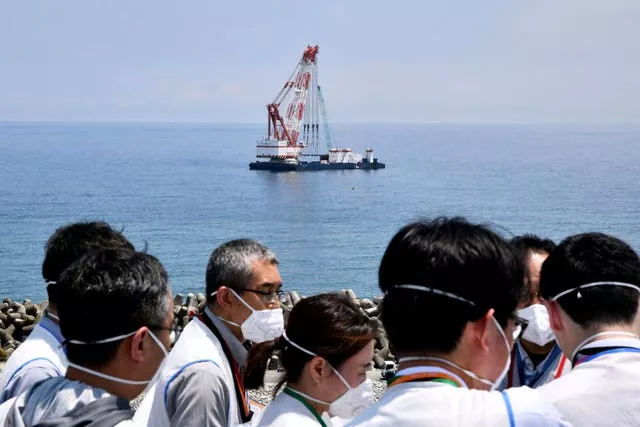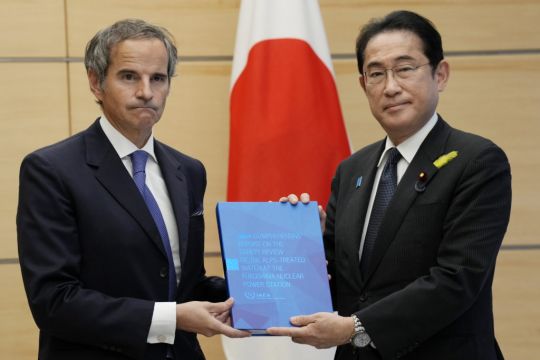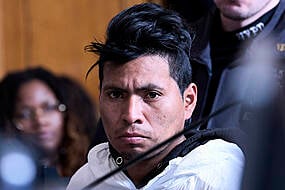The UN nuclear agency has endorsed Japan’s planned release of treated radioactive wastewater into the sea from the damaged Fukushima nuclear plant, saying it meets international standards and its environmental and health impact would be negligible.
The plan is opposed by groups in South Korea, China and some Pacific Island nations because of safety concerns and political reasons.
Local fishing organisations are worried their reputation will be damaged even if their catch is not contaminated.
Rafael Mariano Grossi, the head of the International Atomic Energy Agency (IAEA), submitted its final assessment of the plan to Prime Minister Fumio Kishida on Tuesday.

The report is a “comprehensive, neutral, objective, scientifically sound evaluation,” Mr Grossi said.
“We are very confident about it.”
The report said the IAEA recognises the discharge “has raised societal, political and environmental concerns, associated with the radiological aspects”.
But it concluded the water release as currently planned “will have a negligible radiological impact on people and the environment”.
Japan’s plan and the equipment for the discharge are “in conformity with the agreed international standards and its application,” Mr Grossi said.
He said the dilution of treated but still slightly radioactive wastewater for gradual release into the sea is widely used in other countries, including China, South Korea, the United States and France, to dispose of water containing certain radionuclides from nuclear plants.

Japan has sought the IAEA’s support to gain credibility for the plan.
Experts from the UN agency and 11 nations have made several trips to Japan since early 2022 to examine preparations by the government and the plant’s operator, Tokyo Electric Power Company Holdings (Tepco).
Some scientists say the impact of long-term, low-dose exposure to radionuclides remains unknown and urge a delay in the release.
Others say the discharge plan is safe but call for more transparency in sampling and monitoring.
Mr Kishida, after meeting with Mr Grossi, said Japan will continue to provide “detailed explanations based on scientific evidence with a high degree of transparency both domestically and internationally”.
A massive earthquake and tsunami on March 11 2011 destroyed the Fukushima Daiichi nuclear plant’s cooling systems, causing three reactors to melt and their cooling water to be contaminated and leak continuously.
The water is collected, treated and stored in about 1,000 tanks at the plant which will reach their capacity in early 2024.
The government and Tepco say the water must be removed to prevent any accidental leaks and make room for the damaged plant’s decommissioning.

Japanese regulators finished their final safety inspection of the equipment last Friday and Tepco is expected to receive a permit in about a week to begin gradually discharging the water.
The start date for the release, which is expected to take decades, is still undecided.
The IAEA will continue to monitor and assess the release, Mr Grossi said.
During his four-day visit, Mr Grossi will also visit the Fukushima plant and meet with Tepco officials, local fishing groups, heads of nearby municipalities and other stakeholders.
“I believe in transparency, I believe in open dialogue and I believe in the validity of the exercise we are carrying out,” he said.
Mr Grossi is also expected to visit South Korea, New Zealand and the Cook Islands after his visit to Japan to ease concerns there.







